Manufacturers, metalworkers, and engineers have many options for manufacturing processes, but Photochemical Etching (PCE) stands out. PCE is a chemical machining process that produces complex parts from sheet metal, such as stainless steel, aluminum, brass, etc. It involves using a chemical etchant to selectively remove material from the metal’s surface, allowing for parts with intricate shapes and tight tolerances.
However, PCE is one of many manufacturing processes available. Other processes include laser cutting, stamping, electro-discharge machining (EDM), waterjet cutting, and photo electroforming (PEF). We’ll briefly explain each process’s advantages and disadvantages, so you’ll understand why PCE is your best option
Advantages Of Using Laser Cutting
Laser cutting is a highly efficient and precise method of cutting materials used in many industries, such as automotive and aerospace. It requires less energy than other methods, can be automated using CNC systems, and produces exact replicas with minimal waste. It boasts numerous advantages over other processes, including:
-
- Flexibility
- Precision
- Repeatability
- Speed
- Automation
- Quality
- Contactless cutting
- Versatility
- Energy efficiency
- Smooth edges
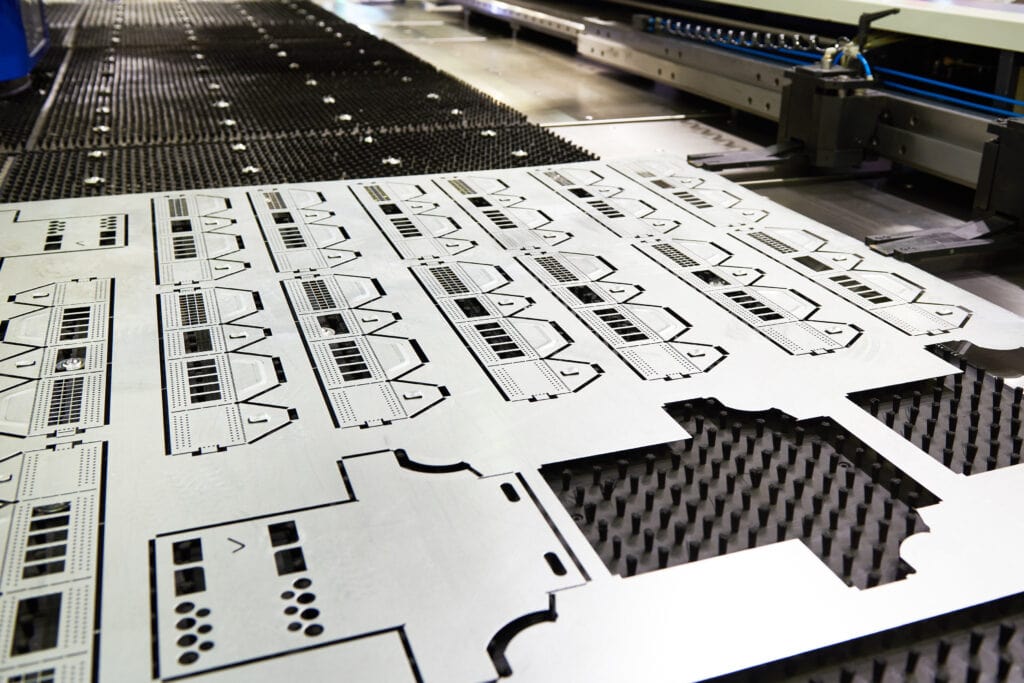
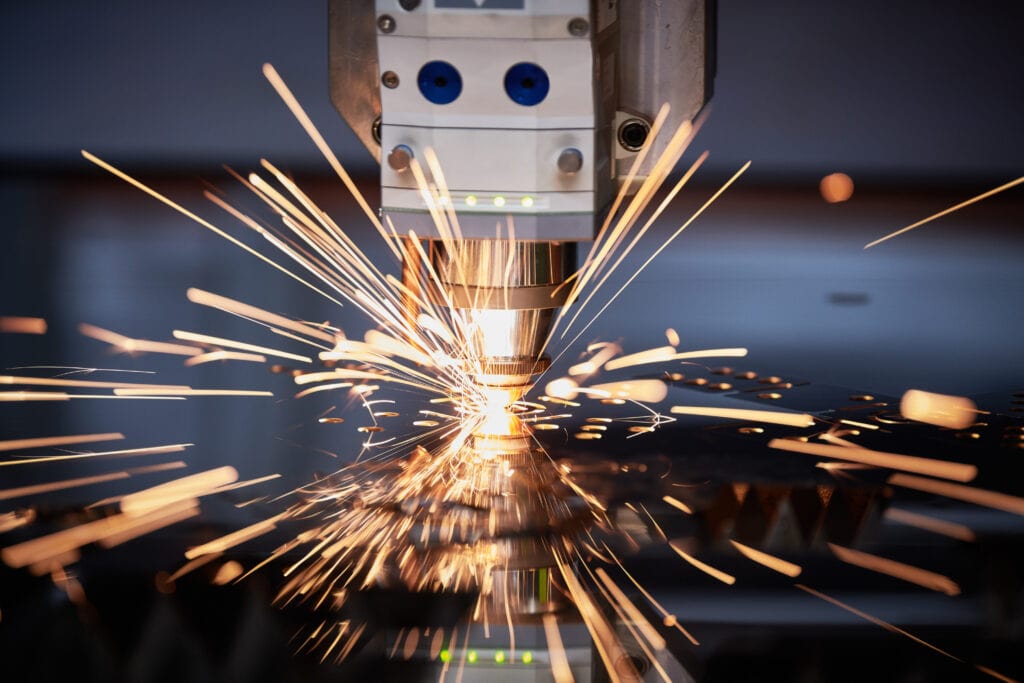
Disadvantages Of Using Laser Cutting
However, there are also some disadvantages to using laser cutting, such as:
-
- Limitations on material thickness
- High energy consumption
- Potential for harmful gases and fumes
Advantages Of Using Stamping
Metal stamping is a manufacturing process that uses one or more dies to form a metal plate into a 3D workpiece. It has many advantages over other methods, such as:
-
- High production efficiency
- Easy automation
- Low energy consumption
- Material savings
It also offers design flexibility, excellent accuracy, and consistent parts with little labor.
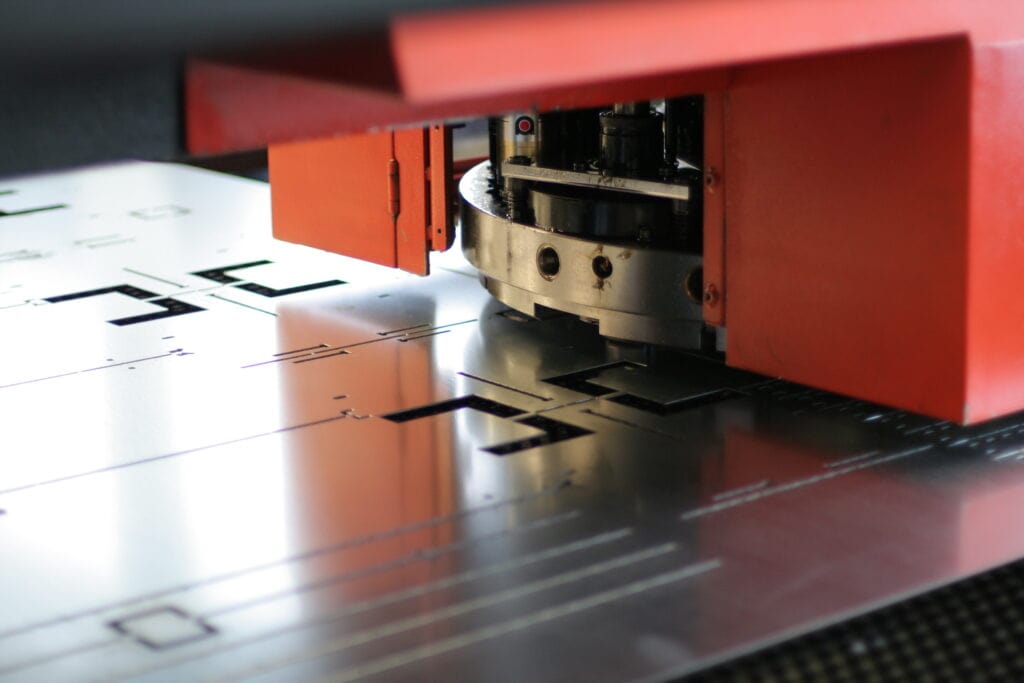
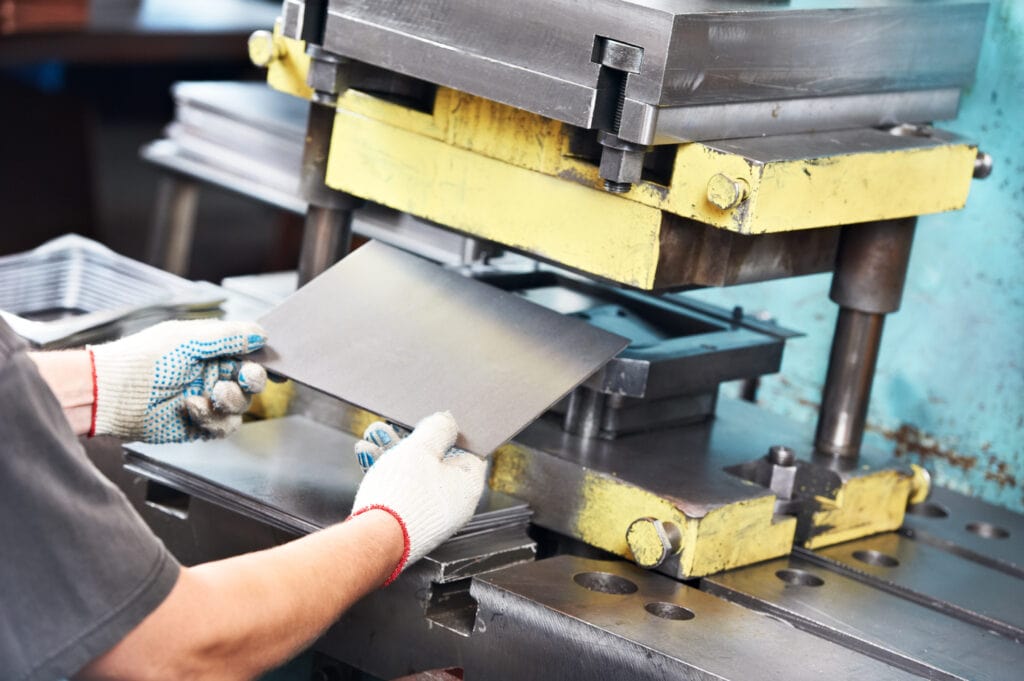
Disadvantages Of Stamping
The main disadvantage of stamping is its poor edge quality, which requires a secondary finishing operation. Other disadvantages include:
-
- The amount of time and money for considerable labor and machine operation
- Only sometimes being easy or cost-effective to produce complex shapes
- The presses used for stamping are expensive and heavy to transport
- Only sometimes stamping dies must be acquired or created, increasing costs
Advantages of Electro Discharge Machining (EDM)
Electro Discharge Machining (EDM) is a precision machining process that uses electrical discharges (sparks) to erode material and complex shapes and features that would be difficult to produce with conventional cutting tools. The main advantages of using EDM include its ability to:
-
- Create complex shapes
- Machine hard materials
- Relatively low cost for some materials
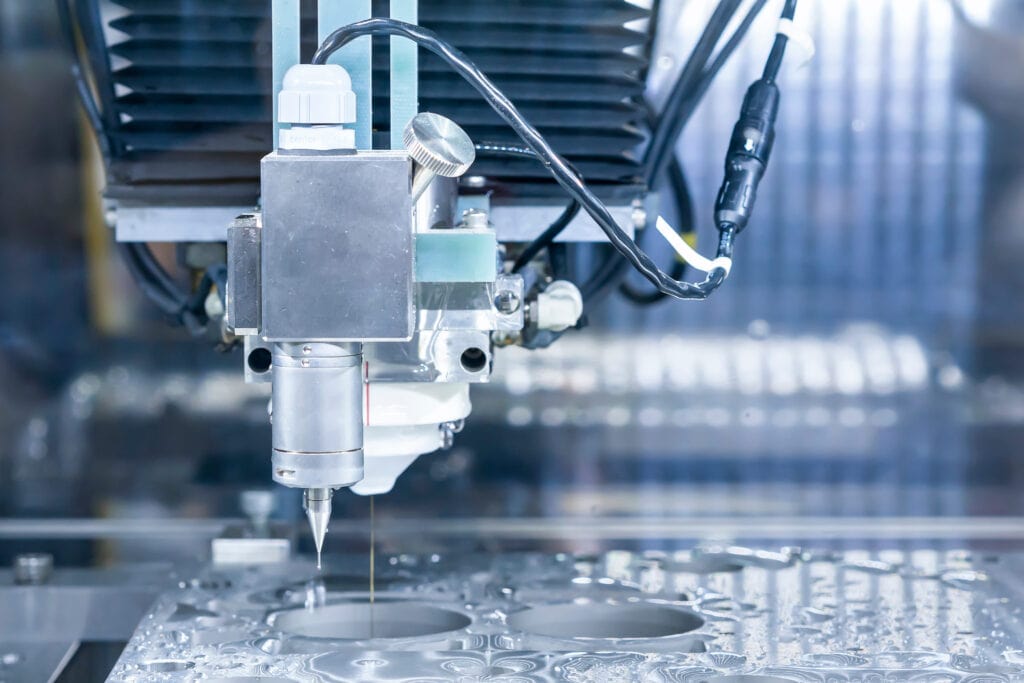
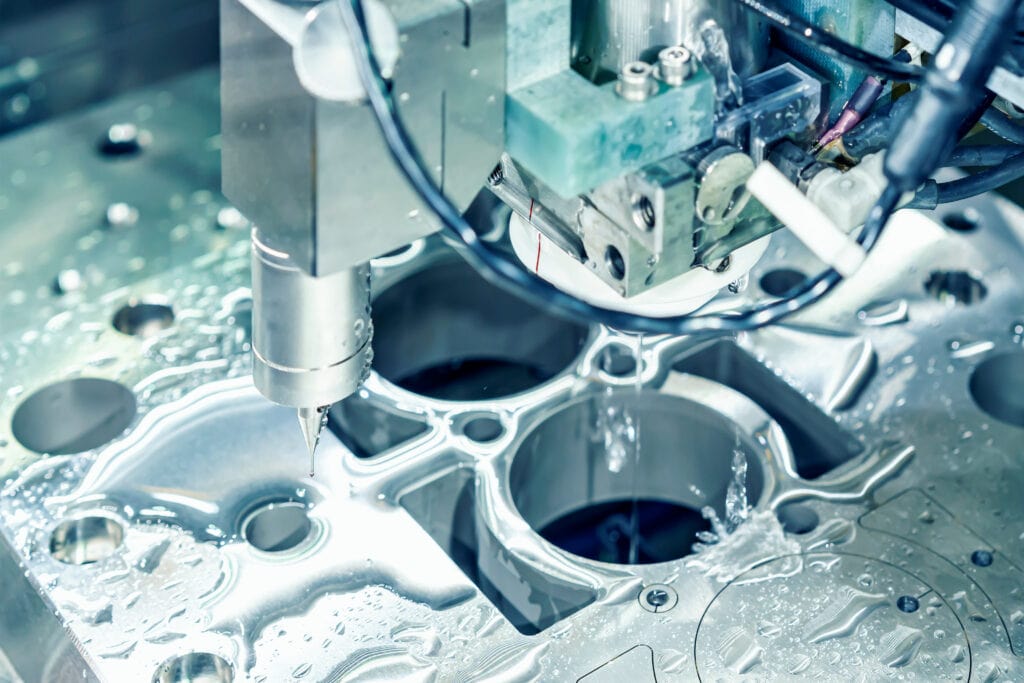
Disadvantages Of Electro Discharge Machining (EDM)
The main disadvantage of electro-discharge machining (EDM) is:
-
- It is more expensive than conventional milling or turning
- If the project is long, then excessive tool wear can occur, and it requires a lot of power
- Deformation, tempering, and structural changes can affect the material
Advantages of Waterjet Cutting
One of the main benefits of waterjet cutting is that it does not create any heat-affected zone (HAZ) due to its cold cutting method, which enables clean cuts and increases operator safety. Additionally, waterjet cutting can:
-
- Cut almost any material, including composites, plastics, metals, glass, stone, or rock
- Produce products at a relatively low cost
- Produce materials very quickly and easily
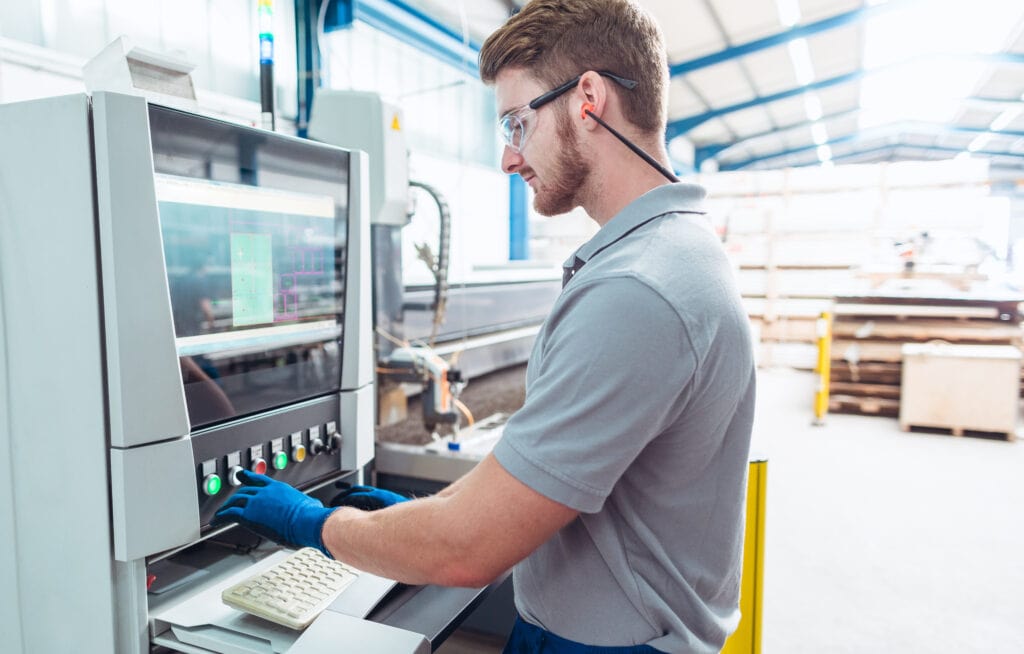
Disadvantages Of Waterjet Cutting
The main disadvantage of waterjet cutting is:
-
- It takes longer than traditional cutters for certain materials
- It’s challenging to create intricately detailed components due to its pressurized stream of water-eroding material
- Engraving is not its strong point
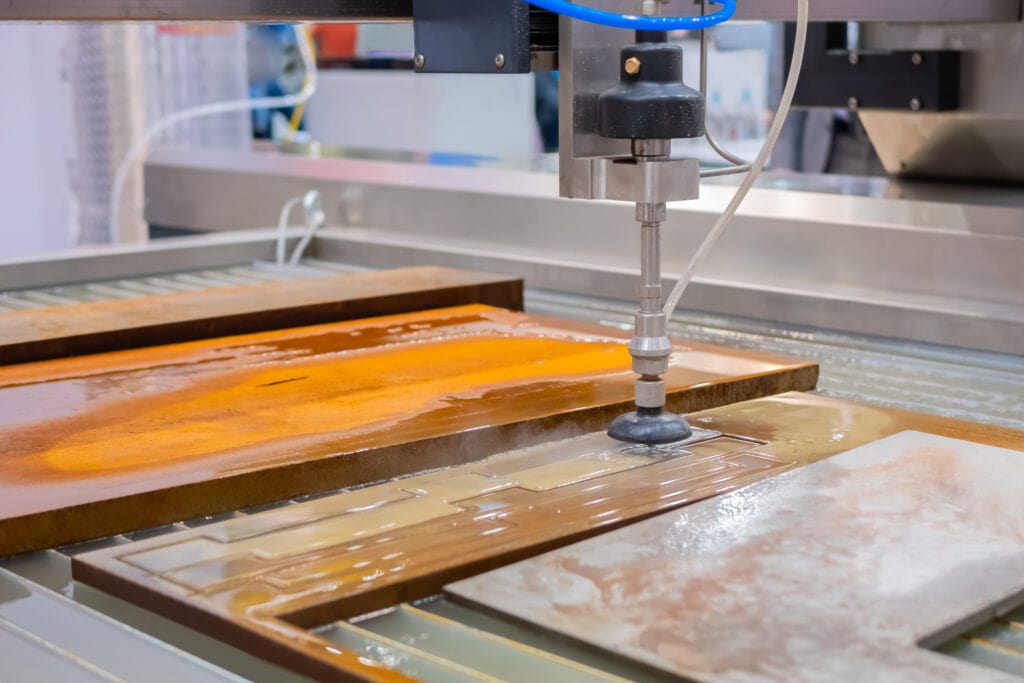
Advantages of Photo Electroforming (PEF)
Photo Electroforming (PEF) is a process that uses an electron beam to structure a photoresist with ultrahigh resolution. This process has several advantages, including:
-
- The ability to construct ultrahigh-precision components
- The ability to accurately replicate the outside shape of a piece
- PEF can be used with micro-PEF technology to use planar-surfaced substrates and photoresists with ultrahigh resolution
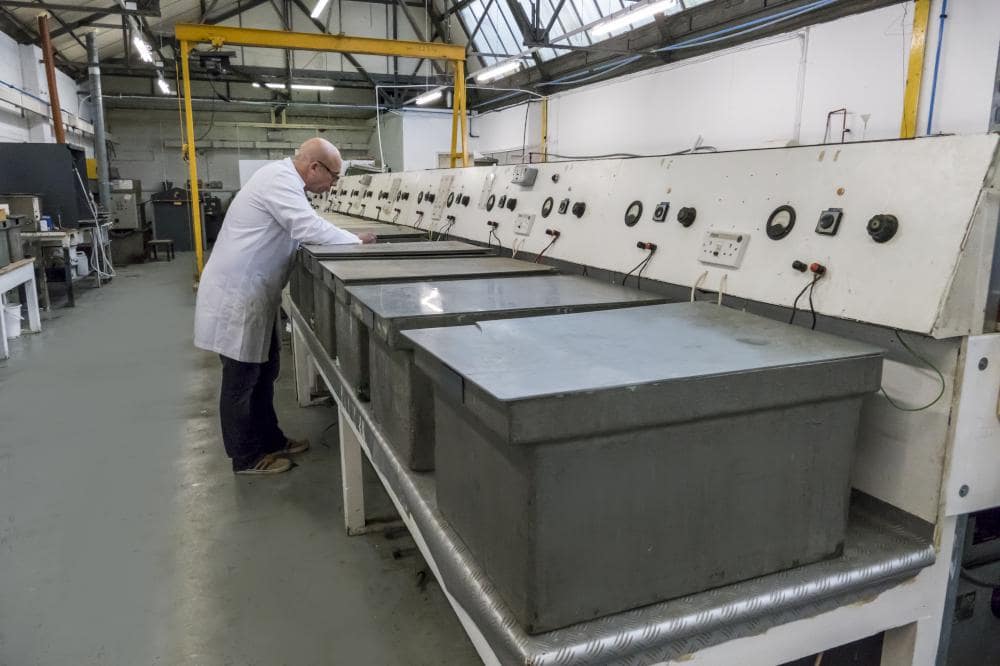

Disadvantages Of Photo Electroforming (PEF)
Photo electroforming (PEF), while an incredibly accurate method, produces small production runs relatively slowly compared to more traditional methods. Additionally, PEF’s drawbacks include the following:
- Slower turnaround time (typically five days)
- Somewhat more expensive than other methods
- It has some hardness restrictions that can factor into the finished material
- PEF also has poor throwing characteristics, meaning deposits produced on vertical surfaces may be uneven.
Please read The Top 5 Reasons to Use Photochemical Etching for additional information on why you should choose PCE for your following manufacturing process.
Additionally, refer to the chart to read the advantages and disadvantages of all the processes we provided in this article.
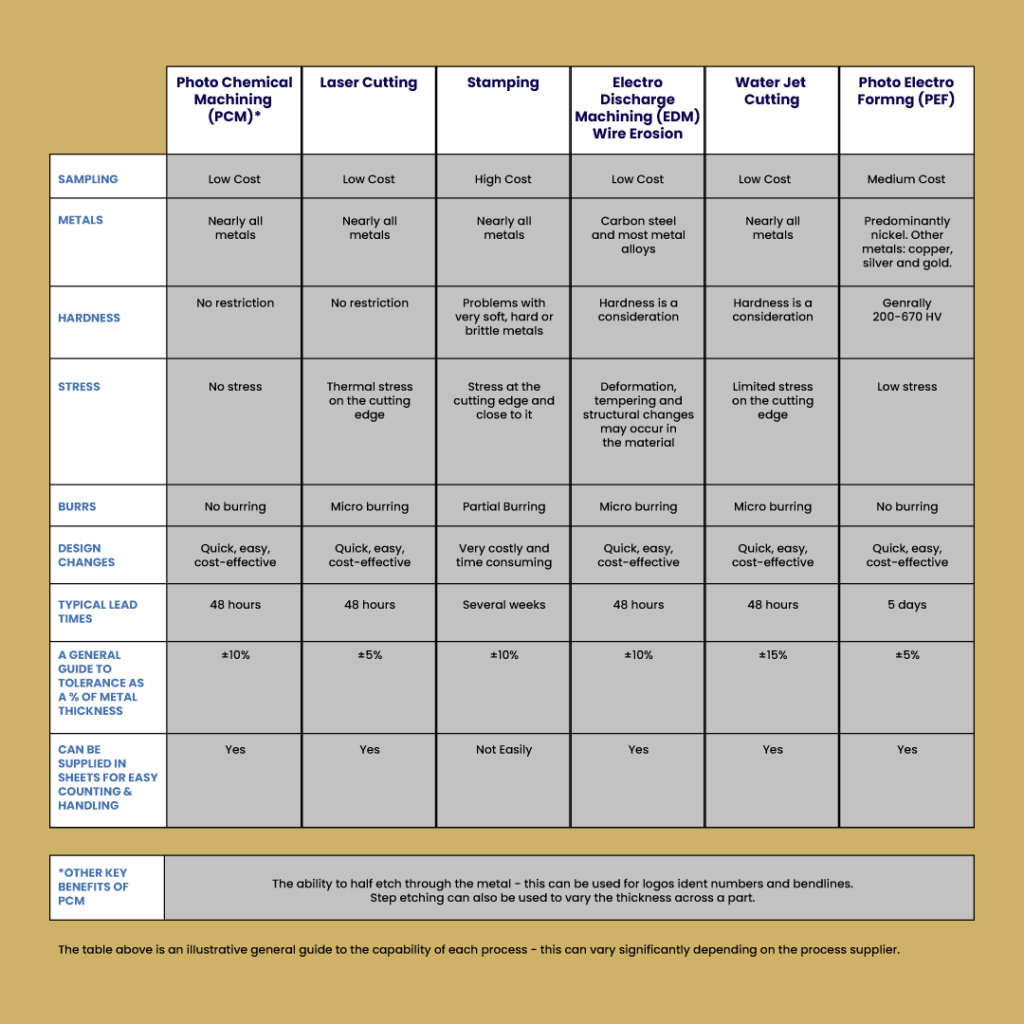
Finally, we’re happy to address any concerns or questions you may have on the PCE process. We’re experts at walking our customers through the entire process to ensure they’re satisfied every step of the way.

